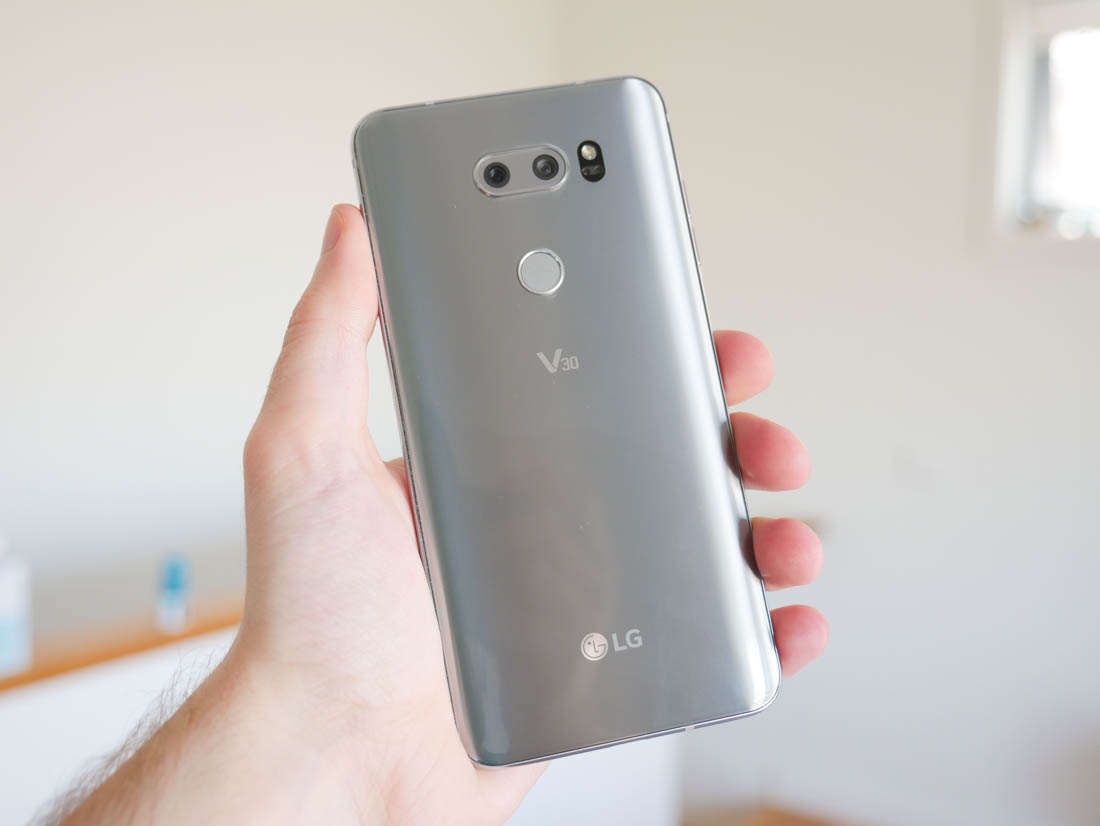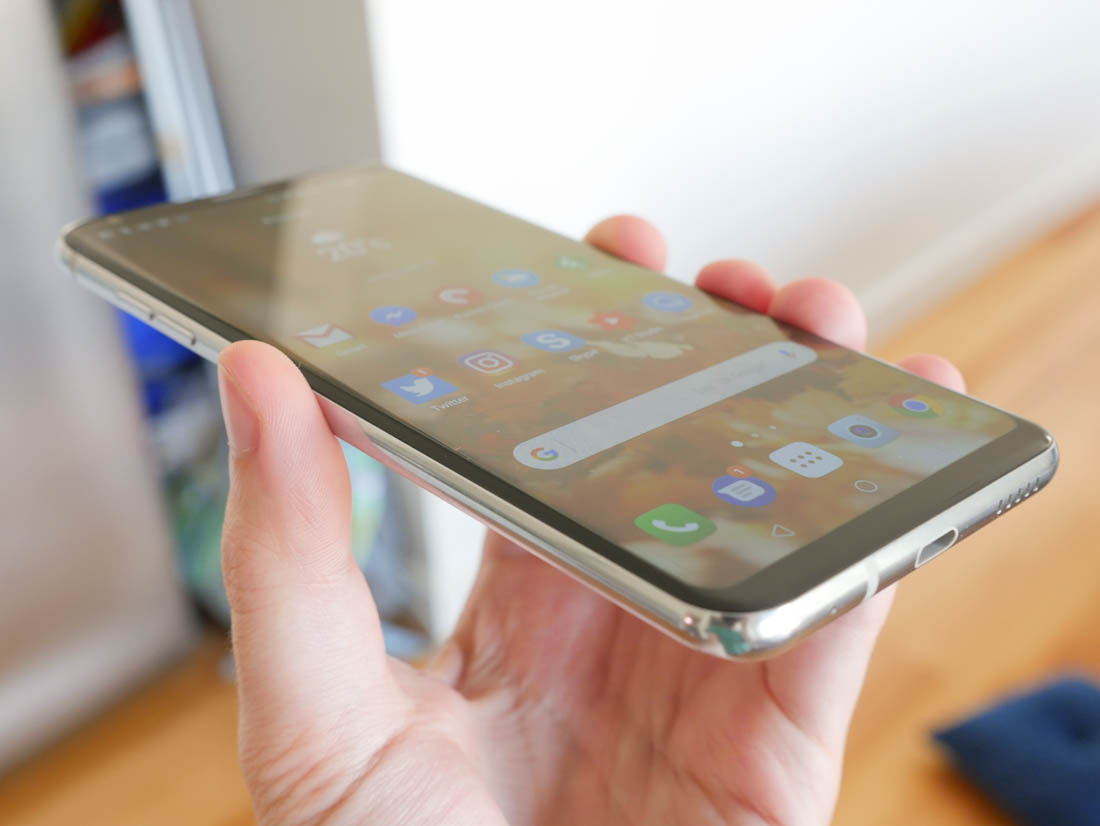LG's smartphone division is in an interesting position right now. They are continuing to produce decent handsets with innovative additions each year, yet the company can't get much traction in the market in the face of strong competition from other brands. The G6 was LG's best phone design in years, launching as one of the first with a small-bezel display, but sales have not rocketed as expected.
The V30 is in a similar position. Occupying the flagship large-screen phone position in LG's line-up, the V30 is packed with interesting features, top-end hardware and enough good stuff to match this year's competitors. But it's once again up against some massive new devices, particularly the Samsung Galaxy Note 8 and Google Pixel 2 XL, leaving LG with an uphill battle to ensure the V30 remains in the conversation.
The engineering team has given this phone every chance to succeed. The 6.0-inch p-OLED display dominates the front panel, with slim bezels and a massive 81% screen to body ratio. Unlike the G6, the internals are all current generation: a Qualcomm Snapdragon 835, 4GB of RAM, 64/128GB internal storage, Gigabit LTE support, microSD expansion... I could go on. The dual camera system from the G6 returns as well, with a slight specification bump to boot.
The V30 is a gorgeous handset. The G6 was a massive leap forward in LG's premium smartphone design, but the V30 takes things to the next level with what might be the most attractive handset on the market. Most of this is down to the expansive 6.0-inch 18:9 display on the front, which feels like it occupies nearly every square inch available to it. I've used plenty of small-bezel handsets this year, but it's the V30 that seems like it has the largest display crammed in.
Despite the enormous display on the front, LG has crammed the essentials into a tiny sliver of bezel at the top. It's there you'll find the front-facing camera, speaker, and several sensors. There's no notch to accommodate these items, which is the best result for content viewing. The downside here is the V30 does not have front-facing speakers, which are found on the Pixel 2 XL. There's only a single bottom-firing speaker of average quality.
The rest of the phone's build is premium as well. The edges are a gloss-coated metal, while the rear is a clean, incredibly shiny glass panel. The use of these materials gives the V30 a top-end look that rivals any flagship, and complements the beautiful Gorilla Glass 5-protected display on the front. The contrast between the silver rear and deep black front is fantastic, too.
Despite the metal frame and glass on both sides, the V30 is slimmer (7.3mm) and lighter (158g) than other big-screen phones like the Galaxy Note 8 and Pixel 2 XL. It's also supposedly very durable: the V30 is both IP68 water resistant - good for submersion in up to 1.5m of fresh water for 30 minutes - and MIL-STD-810G certified.
I still have a few concerns over the V30's durability despite its solid ratings. Glass on both sides, particularly glass that is curved along its long edges, presents a much larger surface area susceptible to cracking than a phone without a glass back. It is Gorilla Glass 5, but so is the extremely fragile Galaxy S8. The V30's use of glossy metal sides and a glossy glass back makes the phone fairly slippery as well, at least compared to the similarly sized Pixel 2 XL. This isn't ideal for more clumsy users; you might be best off with this phone's beautiful chassis inside a case.
As is the case with most big-screen handsets, the V30 is less usable in one hand than the smaller G6. While its 18:9 6.0-inch display isn't as large as a traditional 16:9 6.0-inch screen, the display is still massive and the upper corners can be a challenge to reach single-handedly. With that said, I found the V30 to be very comfortable to hold and operate for its size; the curved edges help a lot in this regard. Users with smaller hands should probably steer clear though.
LG is one of a handful of companies left who refuse to remove the 3.5mm headphone jack on their smartphones. The V30 proudly includes one along the top edge, so there's no dongle life pains here. There's a standard USB-C connector on the bottom, with support for USB 3.1 speeds, plus a microSD card slot along the right edge. You won't find a power button on the edges, though, as the fingerprint reader on the rear doubles as a clickable power button in typical LG fashion.
One big omission that will annoy some is the lack of a removable battery. LG's 2016 smartphone collection, consisting of the G5 and V20, both included removable batteries to the joy of users that love this feature. The V30 ditches the removable battery entirely, ending LG's standing in the market as one of the last companies to offer hotswappable batteries in flagship devices.
The benefit, though, is a larger battery in a smaller chassis. The V30 is smaller in every dimension, resulting in a 12 percent reduction in overall volume compared to the V20. Despite this, without all the associated removable battery housing, the V30 bumps the battery capacity up to 3,300 mAh, a three percent increase. Combined with a more efficient SoC and the V30 offers better battery life.
You might have also noticed there is no secondary display on the V30. While a signature feature of the V20 and V10, LG correctly decided a more expansive display is the better option. Don't worry, though, as the V30 still supports many of the same always-on features on the larger display, should you choose to enable them in the settings. You can view the time, notifications, quick setting toggles and media controls all on the OLED screen with the always-on display enabled (it's disabled by default).






